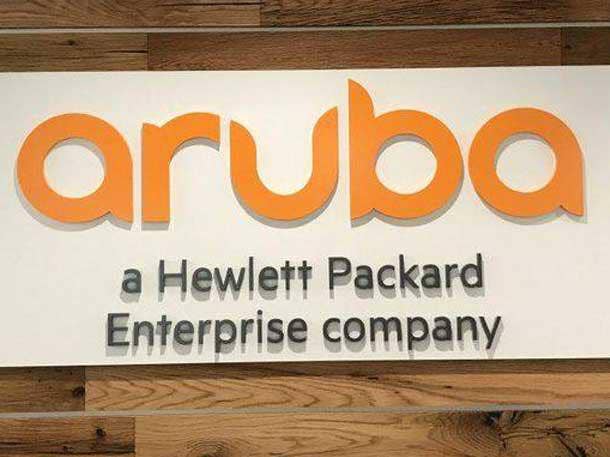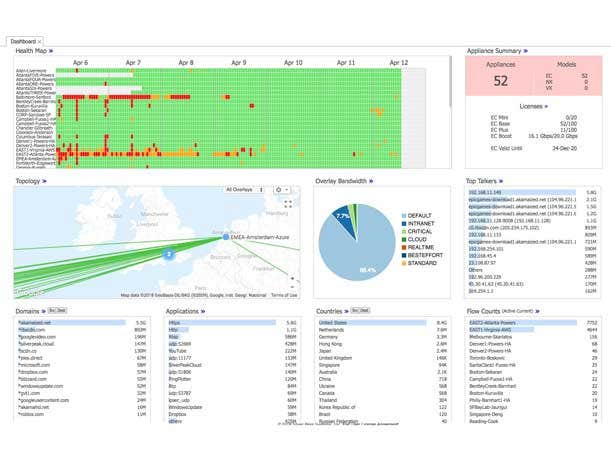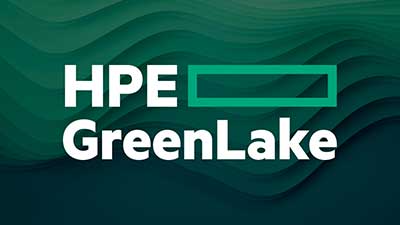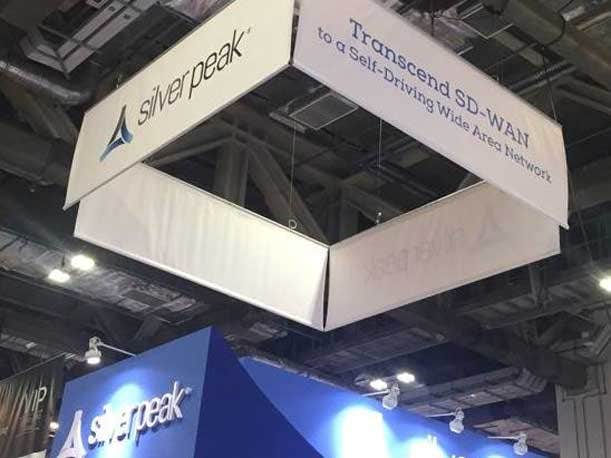Aruba Atmosphere 2023: HPE CEO Antonio Neri’s 5 Boldest Statements
“I’ve been CEO now for almost six years and we have seen a remarkable acceleration in the business and IT … we all live digital transformation every single day, both in our personal life as well as on the professional side. That transformation is driving huge trends in the IT space, both in the way customers want to consume IT, but also on the foundation architectures and how we deliver IT,” said Antonion Neri, CEO of Aruba parent company HPE.

The theme of this year’s Aruba Atmosphere 2023 event, “For What Comes Next,” acknowledged some of the biggest realities shaping the IT market and the opportunities those present.
HPE-owned Aruba Networks is coming off its most successful quarter having broken the $1 billion revenue mark, representing 25 percent year-over-year growth for the business unit. The company’s wireless arm is betting big on Networking as a Service (NaaS), the connection between the cloud and the edge, Secure Access Service Edge (SASE) and private 5G, to name a few areas. It’s these crucial areas of investment that the company is pursuing to keep up with the rapidly changing needs of the enterprise, according to the Santa Clara, Calif.-based company.
In fact, Aruba’s “remarkable” acceleration is thanks in part to the company’s ability to stay on top of the trends that are impacting end users alongside its channel partners, HPE CEO Antonio Neri told attendees during his keynote alongside Aruba’s Executive Vice President and General Manager Phil Mottram at Aruba Atmosphere on Tuesday.
Neri took to the stage to talk about current IT trends, the HPE GreenLake platform and Aruba, and his thoughts on the company’s recent acquisitions. Here are excerpts from the keynote.

On trends shaping Aruba Networks
I’ve been CEO now for almost six years and we have seen a remarkable acceleration in the business and IT and obviously, we all live digital transformation every single day, both in our personal life as well as on the professional side. That transformation is driving huge trends in the IT space, both in the way customers want to consume IT, but also on the foundation architectures and how we deliver IT. Obviously, we come from a world where the mobile-first, cloud-first approach is still very prevalent. Everybody uses their mobile phone to do everything, and sometimes to your own detriment in our personal lives.
But the fact of the matter is that we are now moving to a more both centralized and decentralized model. I grew up in this centralized model with the mainframe. Fast forward 30 plus years, we’re kind of at the same model where the phone is the terminal for multiple functions. But through that journey, we have seen the emergence of the edge. The edge is where we live, where we work, where the vast majority of data is created, [and] is the first step in the digital journey. And that’s why connectivity is so paramount to everything. If you’re not connected, you’re not participating and one of the things that I really worry about, and I care about, is making sure that connectivity is inclusive. We can’t leave society that behind because [they don’t] have access to connectivity.

On the edge as the next frontier
In 2018 in my first year as CEO, I said the next frontier was edge. [At the time] we made a pledge to invest $4 billion over the next four years to make sure that we capitalized on that trend. Obviously, you see the results today. For us, cloud is an operating model that brings speed and agility to everything we do [and] everything you do as a customer. We talk about the hybrid cloud journey as where we are today.
And fast forward, call it a decade, I think everybody will recognize [that] the world is hybrid. And there we have a unique strategy that we’re proud of with our platform called HPE GreenLake. If you think about the cloud today, it’s not really architected to run these very large AI models. [But] HPE is uniquely positioned to capitalize on that trend. These are the threats we see and this is where we have aligned the company portfolio and our strategy for bringing it all together in what we call the journey to one which is the HPE GreenLake platform, which Aruba has been the biggest contributor to.

On how HPE’s GreenLake benefits Aruba’s partners and customers
We’ve learned quite a few things in the networking journey to the edge and obviously, [Aruba] Central is a core tenant of the [GreenLake] platform. We’re driving what we call the journey to one -- one platform, one experience, one way to deliver to you whether you buy as capex or opex, it doesn’t really matter. Fundamentally, we drive the unified cloud experience. At the bottom of it, we have built a common cloud platform with common cloud services, which the Aruba team contributes to. We have made some adjustments to be able to comprehend all the scale and the different types of services. And then the infrastructure that sits in the platform, which is networking, compute and storage, [that] gets optimized by the workloads that run on it, or by the type of software we need to deliver as a part of that infrastructure.
And then above that, obviously, we have a hybrid approach, because this is not just on-prem, it’s also including the three public cloud hyperscalers, AWS, Azure and Google. So, if you are on-prem, you get the same experience that you would be offered off-prem, but if you are off-prem, you are able to manage all those workloads and data the same way in a truly unified hybrid [approach], which is something that customers now need. Because once you go to multi-cloud outside your data center, the fact [is that] these two clouds can’t talk to each other by design. So the question is, how do you manage those over-loads with a consistent cloud operating model?
And secondly, how do you move workloads and data when it makes the most sense? We give you that control plane. And then we’ll have all the AI analytics, including the sustainability. We can now tell you what’s the carbon footprint you’re consuming in your entire cloud estate. And then, let’s not forget security comes with it, it’s not an afterthought. Depending on the industry, you’ll have to do some requirements if you’re in financial services … or if you’re in healthcare. All the services we provide, these are complementary to partners because the partners have their own value-add to this platform, in their own advisor and professional capabilities, or whether it’s to offer managed services capabilities.
When I speak to customers, which I spend more than 50 percent of my time [doing], they tell me: “I want to be on the innovation side of the equation. I need to leverage the data to deliver outcomes faster, or to get new revenue opportunities to protect myself better.” And so, the managed services business is very important. And then you talk about financial services, because that’s a very important aspect. One of the things that HPE has that is unique is the ability to provide asset lifecycle management. When you’re in an as-a-service model, you’re managing a fleet of assets, and then, ultimately, is how you manage those assets in a sustainable way.
Every business unit, whether it is the Aruba business, the storage business, or our private cloud business or AI business, is integrated into this architecture as one integrated experience.

On recent acquisitions
Aruba was my first acquisition in 2015. But since then, I’ve done 35 acquisitions in seven years. One belief I have is that you can’t innovate everything. Therefore, when I think about innovation, I think about it in [two] ways. One is the organic innovation, and that has been our preferred approach. The second is that you need to complement your organic investment through targeted acquisitions, maintaining a very disciplined return on invested capital structure. And we have done that through the 35 acquisitions we have made.
In the last 10 weeks [or so], we have done multiple acquisitions. In this particular business, right after the Silver Peak acquisition, which was very strong for us, we understood that security is very important. Buying SD-WAN and security go hand in hand. And that’s why we decided to acquire Axis Security. Axis brings that very unique, differentiated approach to SASE, which, ultimately, there’s three different ways to go about it with ZTNA [zero trust network access], CASB [cloud access security broker] and SWG [Secure Web Gateway] and this is a unique asset, because it addresses all aspects and it really drives a great integration in that space as a part of the platform.
The second piece of this is private 5G. We started with switching, we bought Aruba, we integrated it, we scaled it … and obviously, IoT comes as part of it. The next big element of this is 5G and how we provide a seamless experience between Wi-Fi and 5G through a private 5G integration. Athonet has amazing assets and has Italian roots like me, which is great. I’m very excited about what we can do with that and not just at the edge, but also the core. Disruption can be very impactful in that market. So, I’m very, very excited in our right acquisitions, [at] the right time with the right talent, the right team. But ultimately, it’s putting it together into one integrated platform so you can sell the solution, not just the widgets.

On the power of data
I believe data today is the new currency. Data has the potential to address some of the biggest problems we have lived for the last few centuries. But if you think about the growth -- data is growing on pace like we have never seen before. In fact, analysts predict that data will double in the next couple of years, more than we’ve ever created in the last 2,000 years. Now, you have this massive amount of data, which is costing you money to store and to make it compliant and secure. And then only 10 percent, maybe, is being used today. So, think about the power of extracting from the remaining 90 percent.
We are entering what I call the ‘New Age of Insights.’ The past decade was all about cloud adoption and the emergence of edge-to-cloud architectures. But, ultimately, there is no CEO or no other officer that thinks about that data. And I believe at some point it will be recorded on the balance sheets of companies, because it’s no different than recording the value of an asset [and data] is your most precious asset.
I think HPE is uniquely positioned to help solve that problem. Think about the edge and the ability to process data locally when it makes sense. We have a lot of use cases that we have spoken about before where through the power of connectivity at the edge, we can bring the cloud to the edge to process real-time information through inference with some machine learning operations right there and only move the data to a centralized cloud to do more detailed work after the fact. Like [with] surveillance, it doesn’t need to go to the cloud. You can process here [and] it’s way more economical and more secure. As I think about the future of the platform, yes, it’s about network and connectivity and yes, it’s about cloud. But it’s going to be all about data and data insights, and that’s the journey we are on with the AI.